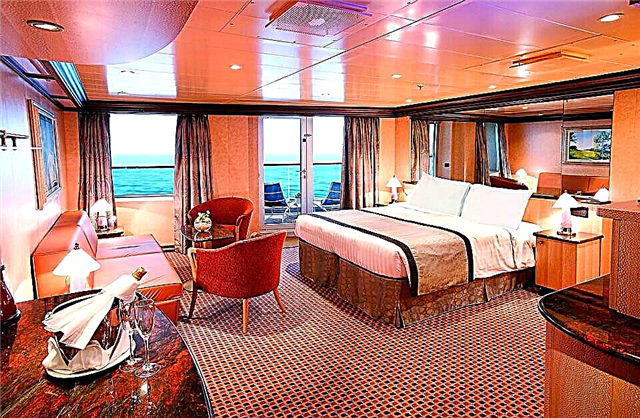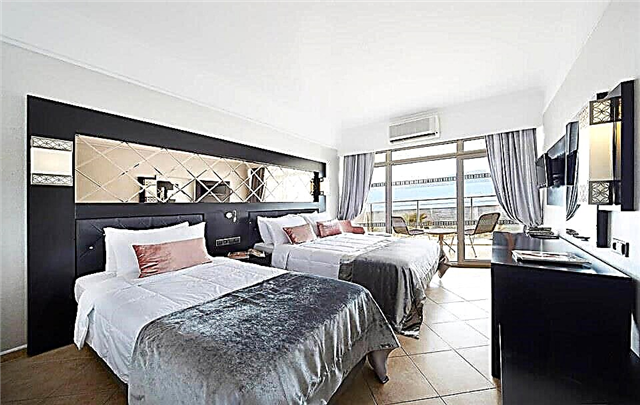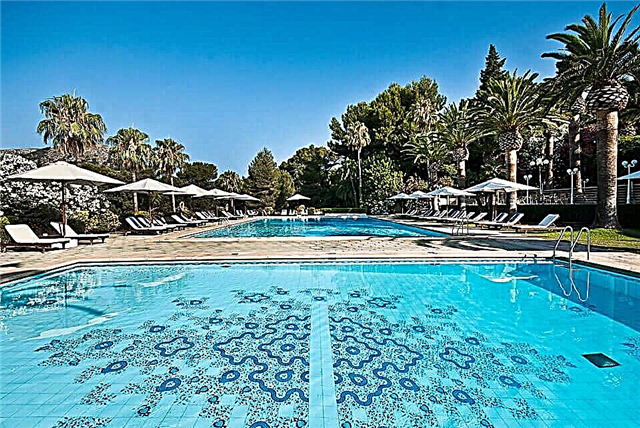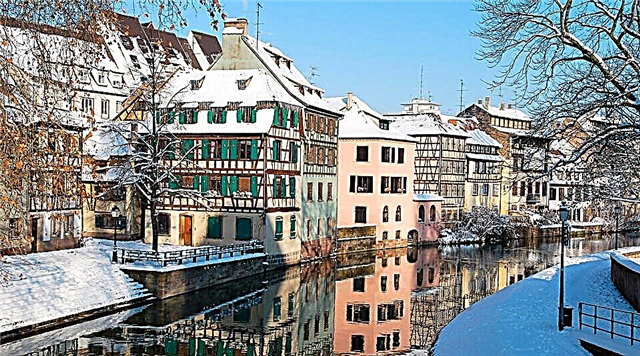Address: Great Britain, London, Bloomsbury district, Great Russell street
Date of creation of the museum: 1753 year
Museum opening: August 10, 1759
The second most visited art museum in the world
Coordinates: 51 ° 31'10.0 "N 0 ° 07'36.8" W
Content:
- Greco-Roman exposition
- Department of Art of Ancient Greece and Rome
- Egyptian exposition
- Department of Antiquities of the Western Asia Region
- Department of the East
History, description
London, the capital of Great Britain, is rich in attractions. And one of them is the British Museum.
The museum was founded at the end of the 18th century, or rather, in 1753, by the parliament of the empire. It is the central historical and archaeological museum of the Kingdom of Great Britain and Northern Ireland... The exposition of the museum has 94 galleries, stretching for 4 km.

British Museum aerial view
As for the sources of the museum exhibits, they were the collections of three prominent and famous Britons: Dr. Hans Sloan, the aristocrat Robert Harley, who at that time had the status of an earl, and Robert Cotton, who was a famous antiquarian. A considerable number of the latter's books served as a springboard for the creation of the famous British Library.
Initially, the museum was located in the aristocratic mansion Montague House near the capital of the British Empire and was closed to the public. The doors of the museum were opened to the general public only 6 years after its creation, in 1759... Since then, it has become more and more rich in a variety of exhibits collected around the world.

Museum main entrance
They brought in antique vases, marbles, rare and valuable minerals, priceless works of art of Ancient Greece. The most striking exhibits are the works of the Parthenon and other values of history from the collections of Greville, Townley, Elgin, Hamilton, etc.
However, not all of the museum's exhibits were obtained in a peaceful and legal way in the modern sense of these words. Britain, as a colonial empire, exported valuable artifacts from its dominions. Countries such as Egypt and Greece are asking to return to them exhibits that were removed during the colonial era, until now.

Great courtyard of Queen Elizabeth II
The 19th century was the peak of the British Museum's development. It was at this time, due to the variety and the large number of exhibits, that the museum had to be divided into departments. The entire collection of the museum no longer fit into the building, so many departments were transported to another location, and in 1847 the Montague House building was demolished. Instead, a new building was built using the classicism style. The construction was supervised by Robert Smirk, which is a repository of museum artifacts to this day. Due to the effective excavations in Mesopotamia in the 20th century, the collection of the British Museum was replenished with a mass of new exhibits from the Middle East.

British Museum Library Reading Room
Nowadays, the museum often hosts guided tours that start at the Paul Hemlin Library. She is popular with children. On Sundays, there is a club meeting called Young Friends of the British Museum. Also, the museum building often hosts events called "Museum Nights", in which visitors stay overnight and participate in a thematic performance aimed at immersion in a particular culture (for example, "Japanese Night").

Moai from Easter Island
Despite the fact that the museum is owned by the British, it contains exhibits from all over the world, which were once subject to the British colonial empire. For example, the collection of Egyptian treasures occupies the most of the museum space (92 meters long and several large halls). It is considered one of the largest collections in the world. and includes such rarities as the granite head of the ruler of Egypt Thutmes III, the priceless sculpture of the Egyptian pharaoh Ramses II, also stone sarcophagi and several copies of the famous "Book of the Dead".
British Museum expositions:

Facade of the Nereid temple
Greco-Roman exposition
It occupies 12 rooms in the British Museum and consists of numerous monuments to the existence of the Roman Empire and Greek democracy. The most striking representatives: Lycian sculptures, remains from the ruins of the famous temple of Diana from Ephesus, such works of art as Phigalion Marbles, examples of luxury goods of the Roman Empire, in particular the values of its rulers. In 1872, the Castellani Collection, a priceless collection of stones from the Antiquity era, appeared in the museum, thanks to which this department became one of the largest museum departments in the world..

I'm going
Department of Art of Ancient Greece and Rome
Complements and continues the theme revealed in the exhibits of the Greco-Roman exposition. It is a unique collection of objects of ancient culture, represented in the overwhelming majority of sculptures. Among them are slabs and figures of the Parthenon, which were illegally exported to England in the 19th century, artifacts from the Aegeis, as well as works of art of the Roman Empire from the cities of Pompeii and Herculaneum.
Egyptian exposition
As mentioned above, this is one of the largest collections of artifacts in the land of the pharaohs. Most of the items in this collection date back to 3000 BC. until the 7th century A.D. An important part of the Egyptian exposition is occupied by priceless ancient writings on papyrus... Among them are chronicles, works of literature, various pagan myths and other valuable historical documents that have survived to this day.

Bas-reliefs of the Ancient East
Department of Antiquities of the Western Asia Region
This section contains very interesting and rare exhibits. There are a number of such priceless things as cylindrical seals of C. Townley and W. Hamilton, collections of historical monuments collected by researchers R. Kerr Porter and C. J. Rich. These scholars specialized precisely in the ancient history of Persia and Mesopotamia. The sources of many of the exhibits in this department are the excavations of Nineveh, the ancient Assyrian capital, the study of the Eastern Mediterranean and the famous Hittite culture.

Department of the East
This section of the British Museum is rich in sculptures, ceramics, various engravings and unique examples of painting from the Far East. Here you can find bronze statues of Buddha, ritual vessels of ancient China, bronze items, hieroglyphic letters dating back 4,000 years and other values of the ancient East.
Not deprived of the attention of the founders of the museum and Britain under the rule of the Romans. Many monuments of Celtic culture and all subsequent peoples who inhabited the British Isles, examples of medieval temple building and jewelry widely illuminate these periods of history that Great Britain passed through.
The museum also has less voluminous, but also significant and valuable departments.

Hall of Ancient Egypt
The British Museum has a huge collection of coins and valuable medals that are a godsend for any coin collector... It consists of 200 thousand copies, some of which date back to the 7th century BC. e. There are also modern coins in the museum.
The Department of Ethnography collected household items of peoples discovered for Europeans by seafarers James Cook and Christopher Columbus. These are African, American and Australian populations.
The collection of the most valuable prints and drawings can be compared to the wealth of the Louvre. Here are the works of such creators as Verrocchio, Durer, Raphael, Van Gogh, Michelangelo, Gainsborough and other creators.

Bust of Ramses II
We should also not forget about the huge library of the British Museum, which includes a lot of historical documents. Among them are manuscripts in European and many other languages, about 500 thousand maps of the era of colonialism, musical works, patents, scientific journals, etc.The library has 6 reading rooms and a total of 670 seats for those who want to study ancient documents on their own.
British Museum London - location
Museum address: WC1B 3DG, London, Great Russell Street. You can get here using the metro, city vehicles or taxis.

Three black granite statues of Pharaoh Senusret III
The British Museum is open every day from 10 am to 5 pm. On Thursday and Friday, many departments do not close until 20:30
The entrance is free.











